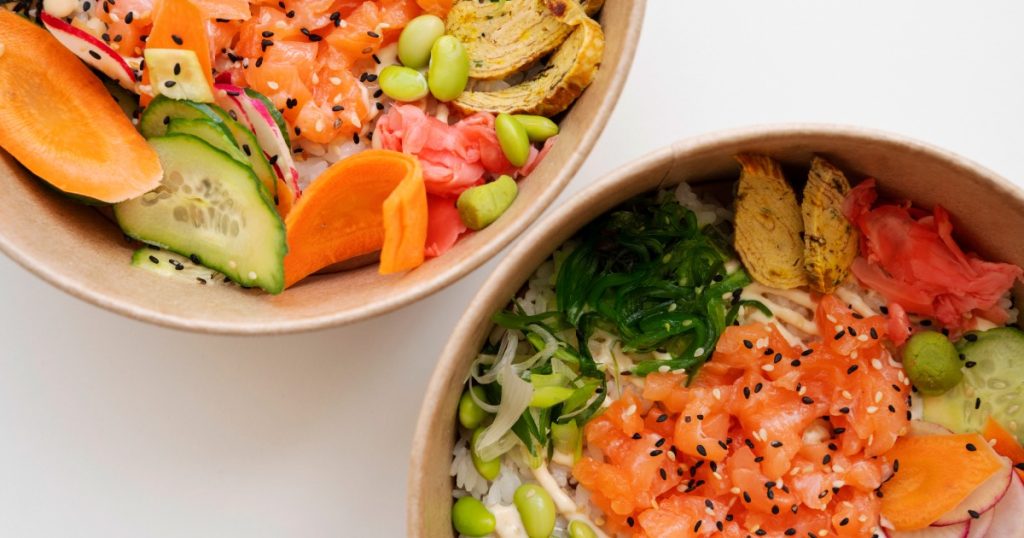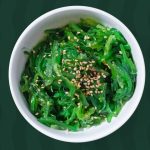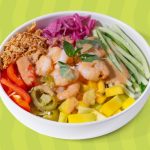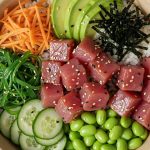The modern poké bowl is everywhere, but its origins are constantly debated. Is it a Japanese dish, given the use of raw fish, soy sauce, and rice? Or is it a native Hawaiian tradition? The confusion is understandable, yet the answer is clear: Poké is Hawaiian in origin, but the bowl is a Japanese-Hawaiian creation.
To understand the difference, you have to look at two distinct historical moments. First, there was the simple fish preparation developed by native Hawaiian fishermen centuries ago, seasoned only with local salt and seaweed. Later, when Japanese immigrants arrived, they introduced key flavors, including soy sauce and sesame oil, and, crucially, the concept of eating fish over rice.
This article will trace this culinary evolution, showing how a simple snack became the global meal we know today.
The Traditional Roots of Poke
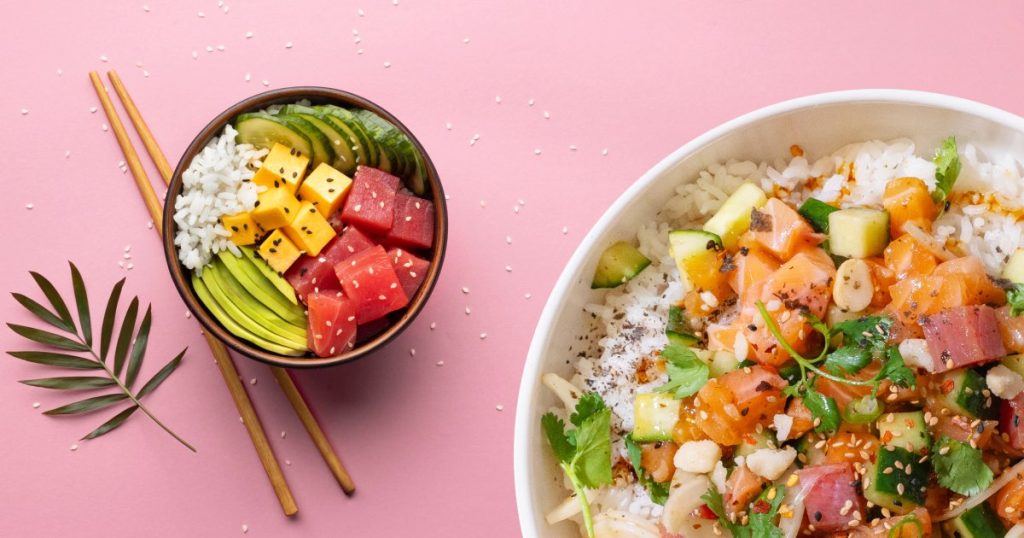
The origins of this dish are purely Hawaiian. The word poké literally translates to “to slice or cut crosswise into pieces,” perfectly describing how native Hawaiian fishermen prepared their catch centuries ago. It was not a complex, sauced meal, but a practical, sustaining snack made from freshly caught reef fish like skipjack tuna (aku).
Because preservation and seasoning were tied directly to the surrounding environment, the preparation relied entirely on indigenous ingredients. The only original flavor boosters were sea salt (pa’akai), various types of seaweed (limu), and sometimes crushed, roasted kukui nut (‘inamona), used for its rich, oily, and savory flavor. This traditional form was always served on its own, a quick fuel source not yet combined with rice or complex marinades.
The Great Transformation: Japanese Influence
Poké underwent its most crucial evolution during the late 19th and early 20th centuries. This was the era when large numbers of Asian immigrants, particularly the Japanese, arrived to work on the sugarcane and pineapple plantations. These immigrants didn’t just bring labor; they brought a rich culinary culture that seamlessly integrated with local Hawaiian ingredients.
This new influence fundamentally changed the flavor profile of poké. Shoyu (soy sauce) and sesame oil quickly replaced the original sea salt and kukui nuts as the preferred marinating agents, lending the dish the rich, savory umami we recognize today.
Furthermore, the Japanese fishing industry made Ahi tuna widely available, solidifying it as the dominant protein over the traditional reef fish. Crucially, the Japanese concept of serving refined food over a staple, seen in dishes like donburi (rice bowls), introduced the idea of placing the marinated fish over a generous bed of rice, transforming poké from a fisherman’s snack into a hearty, complete meal.
Settling the Debate
So, who wins the debate? The definitive answer is that poké is Hawaiian in origin, but the modern bowl is a direct result of Hawaiian-Japanese fusion. To navigate this, it helps to distinguish between the local favorite and the global trend.
The Local Hawaiian Poké is the 1970s island classic, found in deli cases and lunch counters across Hawaii. The fish is always simple, pre-marinated in shoyu and sesame oil, and served with minimal toppings like sweet onion and green onion. It’s a clean, simple flavor bomb designed for freshness.
In contrast, the Global “Poké Bowl” is the mainland phenomenon that exploded around 2010. Its focus is customization and volume. The fish is often dressed on demand with a wide array of non-traditional ingredients, including creamy sauces, corn, mango, and various pickled vegetables. While it pays homage to its roots, this vibrant, layered version is primarily a fast-casual evolution of the original dish.
What Does Olu Olu Poké Offer?

At Olu Olu Poké, we believe in honoring the heart of Hawaiian poké while applying thoughtful innovations. We firmly ground our approach in the traditional island style, prioritizing the purity and freshness that make the dish a local staple. Our bowls emphasize high-quality ingredients, prepared with classic, clean shoyu and sesame oil marinades, sweet onion, and green onion, a dedication that ensures the perfect balance of seasoning and flavor, no matter which protein you choose.
However, we understand that great food always evolves. We introduce controlled, complementary additions that enhance, rather than overwhelm, the main ingredients. This approach includes innovative elements to guarantee superior texture and vibrant flavor profiles, ensuring you get the clean taste of the islands with a signature elevation.
Conclusion
The final word on the debate? The modern poké bowl is a powerful Hawaiian tradition elevated by Japanese influence. It’s a delicious story of cultural fusion, and when you want to experience the clean, balanced flavor that truly honors this heritage, you need the Hawaiian style.
Visit Olu Olu Poké today and taste the difference that quality and tradition make!
FAQs
1. What does the Hawaiian word ‘poké’ actually mean?
The word poké literally translates to “to slice or cut crosswise into pieces.” It describes the method of preparing the fish, not the complete meal itself.
2. Was original poké served over rice?
No. The original, native Hawaiian dish was a simple snack of reef fish, seasoned with indigenous ingredients like sea salt and seaweed, and served entirely on its own.
3. If poké is Hawaiian, where did the soy sauce and rice come from?
These elements are the result of Japanese culinary influence. Japanese immigrants in the late 19th century introduced soy sauce (shoyu) for marinating and the concept of serving the seasoned fish over a staple like rice.
4. What is the main difference between “Local Hawaiian Poké” and the “Global Poké Bowl”?
Local Hawaiian poké is always simple and pre-marinated with minimal toppings. The Global Poké Bowl emphasizes vast, on-demand customization, layering, and numerous non-traditional sauces and toppings.
5. Does Olu Olu Poké follow the traditional or customized style?
Olu Olu offers an elevated Hawaiian style. We prioritize the clean, authentic marinade and fresh ingredients to make the fish the star, while introducing thoughtful, enhancing innovations.
